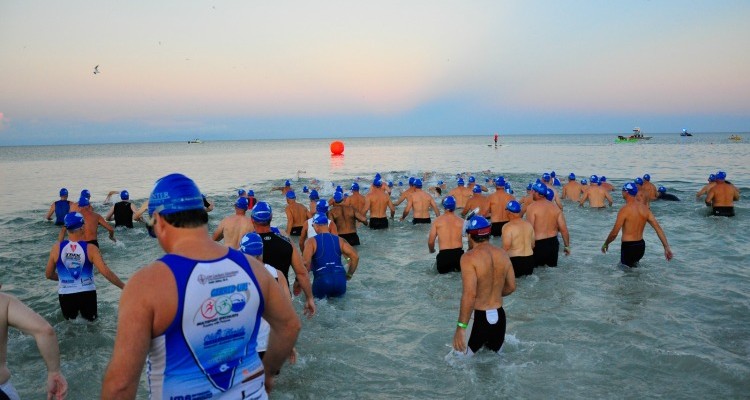If you want to be eligible for top prizes at some local events, it will cost you.
When Julia Wreski, a local triathlete and mother of four, crossed the finish line at Sunday’s Galloway Captiva Sprint Triathlon, she was elated. She knew she’d run a pretty fast time—she was willing to bet she’d come in within the top five women in the more than 600-person-deep race.
She did. However, her name is absent from the roster of top female finishers.
A rule change cost Wreski her spot. This year, the local race, which is held annually on the Island of Captiva and benefits CCMI (Community Cooperative Ministries Incorporated, a local food bank), charged an extra $10 for those who wanted to compete in an “elite” wave. Elite athletes got to start before others and—as Wreski found out the hard way—were the only ones eligible for overall awards.
So it was a disappointing scene as Wreski waited for the awards ceremony to begin, and learned that although she was the second female to cross the finish line, she would not be awarded second place. Instead, she’d have to settle for first in her age group.
“I’m not normally a boat rocker, but it bothered me a little bit. I put in a lot of effort,” she says, adding that she didn’t bring her bumping to the race officials’ attention because she didn’t quite understand the new rules. “It was hard to explain to my kids that I was second place overall, but only got first in my age group,” she added.
According to the event registration page, elite amateur participants must be able to prove that they completed a USAT sanctioned sprint triathlon in under 1:00 for men, under 1:10 for women. How the prizes would be awarded was described on the registration, and while it was clear that elite athletes could not qualify for age-group prizes, it wasn’t totally clear that there would be no crossover from age group up to elite:
Elite Amateur athletes will place within their wave by gender, with the top three finishers awarded; they will not be eligible for age-group awards. Individual athletes (non-elite) will place by age group and gender, with the top three finishers awarded.
Race organizer Angie Ferguson explained that the differences between registering as an elite amateur and standard registration (age group) were not only explained on the event website and active.com registration site, but in emails that went out to athletes.
“If you were registered for elite, you placed in elite. If not, you placed in your age group,” Ferguson explained. The elite category was added this year “because we have so many local athletes who compete at not only an elite level but on the world-class stage and this gives them the opportunity to go head-to-head on a safe, local course and use the extra $10 entry fee towards a local charity.” The Galloway Captiva triathlon raised $20,000 for CCMI and “100% of that money stays here, locally,” she added.
Around 25 athletes, both male and female, did chose to race as elite amateurs on Sunday, which allowed them to go off in the first wave of the race and not be stuck in crowds or feel congested anywhere on the course. The problem for many, though, was that this new, more expensive elite wave simply makes an already pricey sport—the Galloway Captiva Triathlon costs between $75-$85 depending on when you register and that doesn’t include the extra $10 elite fee or the $12 one-day USA Triathlon racing license you must purchase—out of reach. That the new category effectively separates the field by who wants to pay, not who races faster.
And that’s where Wreski wound up. Going into the race, she thought that, even if she registered as an age grouper, she could place overall. In the end, it wasn’t the case.
USA Triathlon, the sanctioning body for most triathlons held in the U.S., says that the organization leaves decisions like this up to local race directors. Only when there’s prize money of over $5,000 available does the organization dictate who is eligible to win.
Despite the disappointment, Wreski is upbeat. “I wouldn’t change anything about the race. Those ladies I raced with work really hard too. The race is fun, and for a good cause,” says Wreski. And she adds that even though she maybe had to duck-and-weave a bit more on course, her late-wave start may have helped her. “I was more motivated to push harder to make sure I caught up with the elite athletes.”
And for now, she’s moved on; Wreski is focused on the remainder of her training as she prepares for Ironman Florida. But you can bet she’ll double-check all the fine print next time around.

